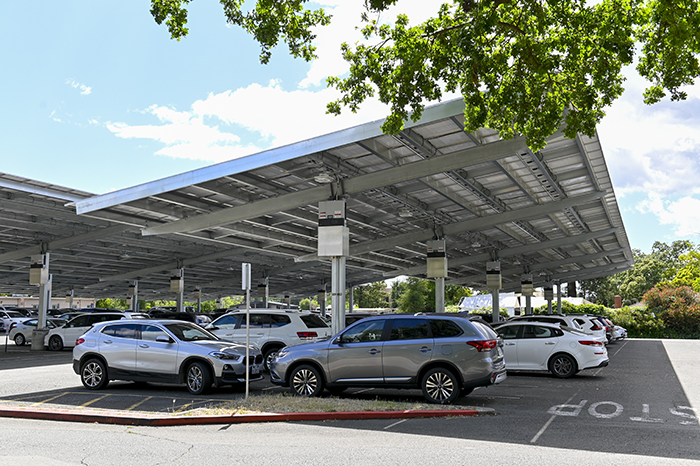 February 14, 2023, Santa Rosa, CA — Santa Rosa Junior College (SRJC) has released its 2022 Sustainability Report, offering Sonoma County residents a clear summary of the multiple campus improvement projects that the college has undertaken in recent years in its drive toward greater efficiency and sustainability, reducing the college’s potable water consumption and providing energy independence during emergencies.
February 14, 2023, Santa Rosa, CA — Santa Rosa Junior College (SRJC) has released its 2022 Sustainability Report, offering Sonoma County residents a clear summary of the multiple campus improvement projects that the college has undertaken in recent years in its drive toward greater efficiency and sustainability, reducing the college’s potable water consumption and providing energy independence during emergencies.
In 2011, the college signed the Talloires Declaration, a statement of intent by over 500 colleges and universities around the world to lead their respective communities in developing, supporting, and maintaining sustainable systems. The 2014 voter approval of Measure H bond funds provided the perfect opportunity to pursue large scale sustainability projects as part of the construction of new buildings and modernization of existing facilities, and the 2016 Facilities Master Plan prioritized and provided a guide for progression. In 2019, SRJC became the first community college to complete the Sustainability Tracking, Assessment & Rating System, known as STARS.
The community has seen photovoltaic solar arrays go up over the parking lots at the Santa Rosa, Petaluma, and Windsor campuses, saving the district over $1 million in energy spending each year. The campuses operate on an energy base that is currently 40% renewables, while the district’s 365-acre Shone Farm will see 90% of the farm’s energy needs met by its new solar array. The Santa Rosa and Petaluma campus solar systems and battery storage form urban microgrids which can support full campus power needs for a few hours, or essential services only for an indefinite period of time. Future upgrades planned for other parts of campus have the goal of making the Santa Rosa campus completely independent of fossil fuels.
Heating and cooling at the Santa Rosa campus is served by the newly constructed Quinn Central plant, serving five buildings and the new Olympic-size pool. The electric boiler dramatically reduces natural gas usage, and using the plant’s water reclamation tank has reduced the college’s potable water consumption by nearly 20%.
With student and employee transit making up the majority of the college’s greenhouse gas emissions, transit is also addressed in the report, with SRJC students currently eligible for a Clipper BayPass pilot program that offers free public transit for two years, and on the horizon, a pedestrian bridge across Highway 101 will soon make it easier to reach the Santa Rosa campus via light rail.
“I have always believed it was wise to invest in energy savings programs that would provide cost savings in the long-term. With our investment in sustainability initiatives through Measure H, we will save over $40 million in twenty years,” said Superintendent/President Frank Chong. “Those cost savings can then be invested directly into education rather than energy bills. I believe this report is a great example of how we are working together to build a better tomorrow."
For more information, view the full report at: https://sustainability.santarosa.edu/2023-report




